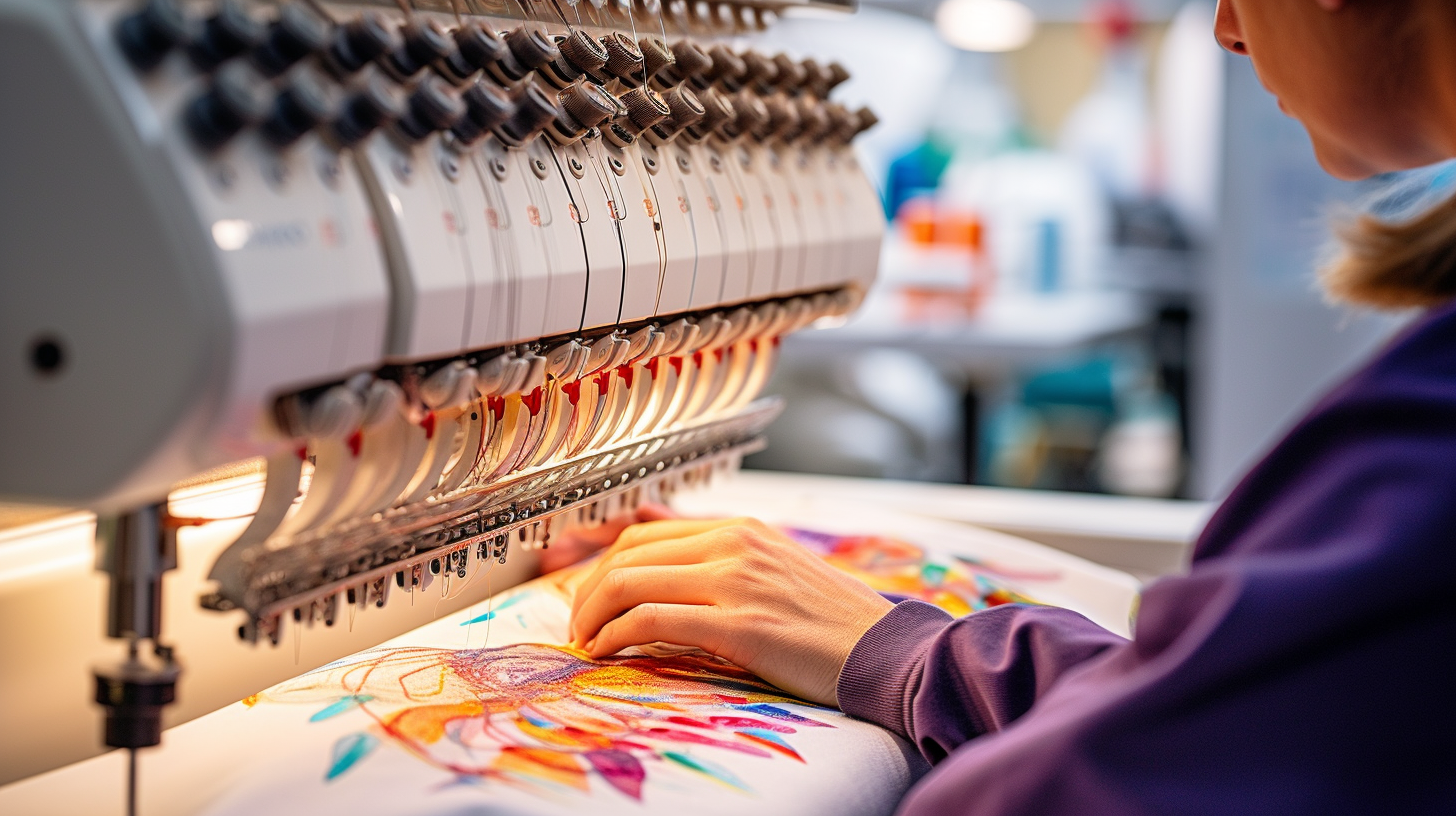Comprehensive Digitizing for Embroidery: From Design to Sew
Comprehensive Digitizing for Embroidery: From Design to Sew
Blog Article
Understanding the Embroidery Digitizing Refine: Your Ultimate Overview
Embroidery digitizing is a careful craft that requires precision and proficiency to convert intricate designs into electronic formats for maker embroidery. As artisans start this trip to understand the needlework digitizing process, an extensive understanding of the fundamentals establishes the structure for quality. However, beyond the simple expertise exists a world of innovative software, specialized tools, and nuanced methods waiting to be checked out. By diving right into the subtleties of digitizing, one can open a globe of imaginative opportunities and boost their needlework projects to new heights.

Comprehending Embroidery Digitizing Essentials
Needlework digitizing essentials create the structure whereupon complex styles are equated into machine-readable styles for accurate stitching. This initial action in the embroidery digitizing procedure is crucial for ensuring that the last stitched item is a devoted representation of the original layout. Recognizing needlework digitizing fundamentals includes comprehending essential concepts such as stitch kinds, sew instructions, density, underlay, and draw payment.
Stitch types play a vital duty in establishing the visual and textural outcome of the stitched layout. By choosing the appropriate stitch type, whether it be satin, fill, or running stitch, digitizers can attain the wanted impact and improve the overall top quality of the needlework. Additionally, sew instructions influences the circulation and dimension of the layout, while thickness identifies the spacing and coverage of the stitches.
Moreover, underlay sewing offers security to the layout by protecting the fabric and protecting against distortion during the needlework process. Draw payment is an additional necessary consideration to neutralize the natural propensity of fabric to agreement when stitched. Grasping these embroidery digitizing essentials is essential for creating professional-quality stitched items.
Choosing the Right Digitizing Software
Choosing the ideal digitizing software is an important choice that significantly affects the effectiveness and top quality of the needlework digitizing procedure. Digitizing for Embroidery. When choosing the best digitizing software application, it is crucial to consider factors such as the complexity of designs you prepare to create, the user-friendliness of the software program, the degree of consumer assistance supplied, and the compatibility with your needlework equipment
There are numerous digitizing software options available in the market, ranging from basic programs for beginners to advanced software for professional digitizers. Some preferred selections consist of Wilcom EmbroideryStudio, Hatch Needlework Software Application, and PulseID. These software application bundles provide a variety of tools and attributes to use this link aid you produce complex styles with simplicity.
Prior to making a choice, it is a good idea to check out the different software alternatives with totally free trials or trials to establish which one finest suits your needs. In addition, checking out reviews and looking for referrals from knowledgeable digitizers can provide beneficial understandings into the strengths and weak points of each software application package (Digitizing for Embroidery). By carefully reviewing your demands and comparing the attributes of different digitizing software program, you can make an educated choice that boosts your embroidery digitizing operations
Digitizing Tools and Strategies

Optimizing Layout Settings for Needlework
Understanding the details of style settings is essential in accomplishing ideal cause the embroidery digitizing procedure, building upon the structure laid by comprehending digitizing devices and techniques. When enhancing layout setups for embroidery, it is important to think about factors such as stitch type, thickness, padding, draw payment, and enrollment. Sew kind selection impacts the general look and feeling of the style, with alternatives like satin, fill, and running stitches using various appearances and effects. Thickness describes the spacing and thickness of stitches, impacting the style's insurance coverage and longevity. Proper underlay sewing supplies stability and avoids material distortion, particularly for complex designs or on stretchy products. Draw settlement adjusts for textile stretch during sewing, making sure precise style replication. Enrollment setups align various components of the layout properly, keeping total layout stability. By fine-tuning these style setups, embroiderers can improve the quality and accuracy of their stitched developments.

Troubleshooting Common Digitizing Issues
When running into common digitizing problems during the embroidery process, it is crucial to understand the source and carry out reliable solutions quickly. One common trouble is stitch thickness problems, where stitches check here may be also thick, causing the material to pucker, or also sporadic, bring about spaces in the design. Changing the stitch density settings in the digitizing software can assist settle this issue.
Another constant difficulty is thread breaks throughout the needlework procedure. This can happen as a result of numerous reasons such as wrong tension setups, plain needles, or making use of low-grade thread. Ensuring correct maintenance of the embroidery maker, consisting of regular needle adjustments and tension modifications, can minimize the incident of string breaks.
Furthermore, layout registration mistakes can lead to misaligned elements within the needlework layout. Checking the layout positioning in the digitizing software program and making necessary modifications before stitching can help in avoiding this issue. By attending to these usual digitizing concerns quickly and efficiently, you can make sure a smoother embroidery procedure and top quality finished items.
Verdict
To conclude, understanding the needlework digitizing procedure calls for a strong understanding of the essentials, the appropriate option of software application, and expertise of devices and techniques. Maximizing design settings and fixing common digitizing issues are essential steps in making sure top notch needlework results. By adhering to these steps vigilantly, one can accomplish precision and performance in have a peek at this site the digitizing process.
Report this page